Art Fairs
Go Ahead, Call It a Comeback: TEFAF Returns to Maastricht With Steady Old Master Sales and a Bevy of Museum Groups Looking to Buy
TEFAF is celebrating a "triumphant" return to its home turf after an absence of more than two years.
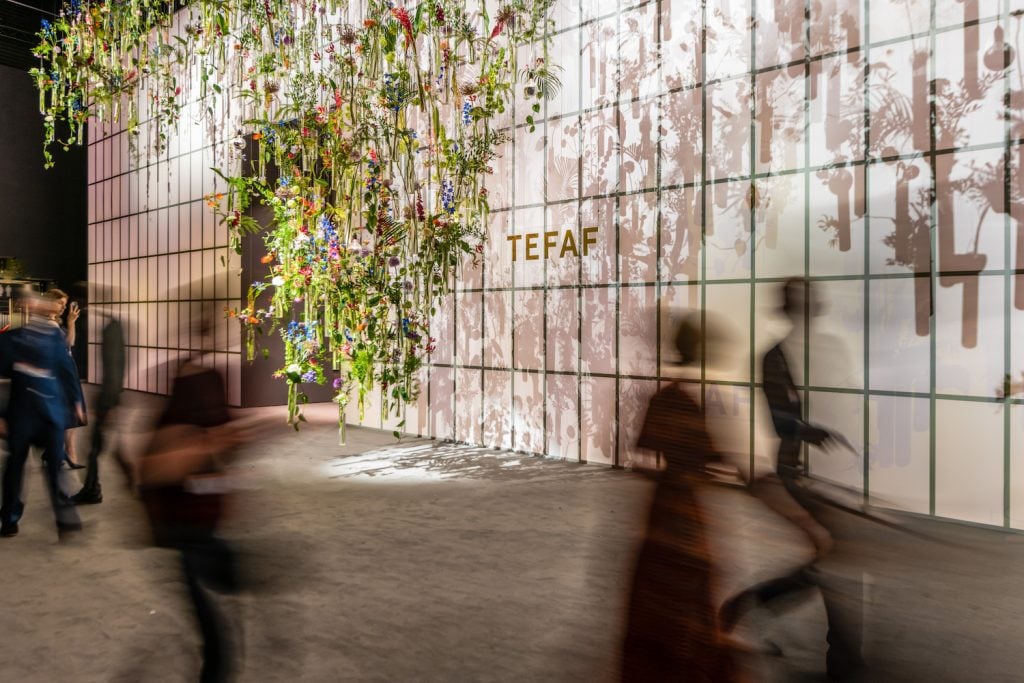
TEFAF is celebrating a "triumphant" return to its home turf after an absence of more than two years.

Eileen Kinsella

As the art world attempts to get the global art fair calendar back on track, it seems there are still some final pivots needed—after more than two years of adaptation and reshuffling—before a full return to IRL events.
That is at least part of the reason why the European Fine Art Fair (TEFAF) chose to host its first in-person art fair in Maastricht in two years this June, rather than during its standard March time slot. Noting the loyal exhibitor base of TEFAF participants, chairman and dealer Hidde Van Seggelen told Artnet News that it was important to mark the 35th anniversary of the fair on its home turf, while conceding that temperatures inside the convention center were a few notches higher than usual owing to the summer weather.
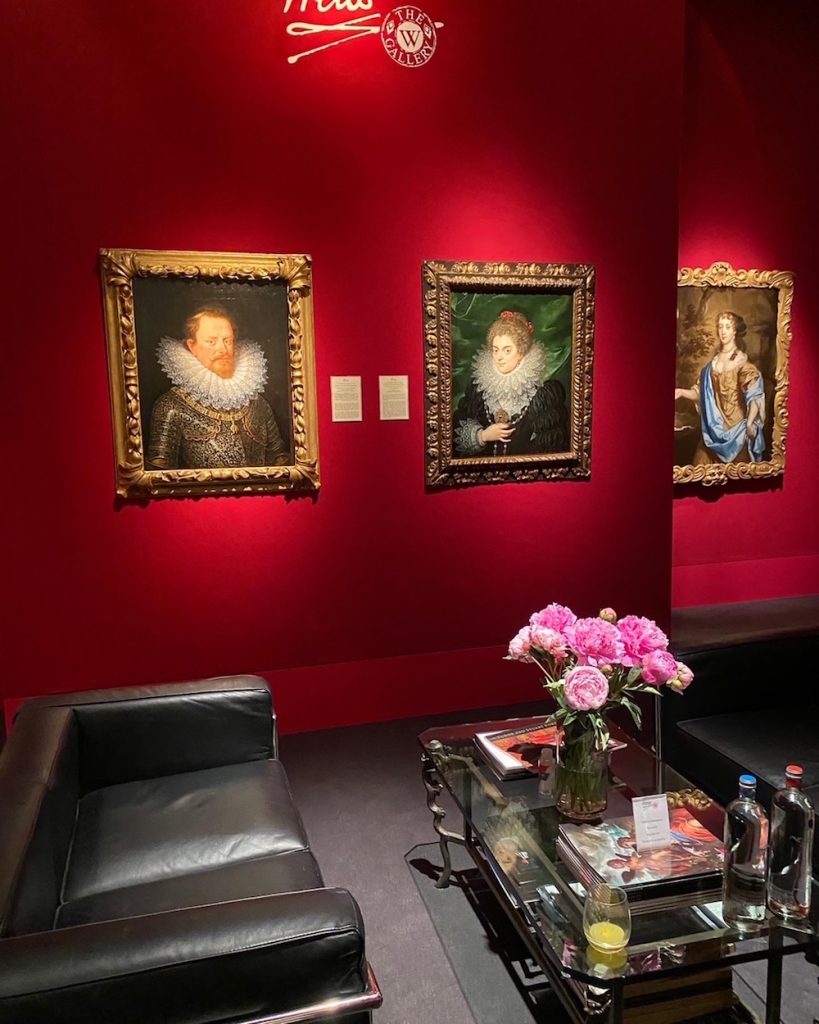
Installation view of Weiss Gallery, London. Photo by Eileen Kinsella.
This year’s June edition had a slightly smaller group of exhibitors at 242, down from 280 dealers in the 2020 edition, and a shorter run from June 24 to June 30, compared with the usual 10-day, two-weekend span. The fair will return to that standard schedule when it returns in March, Van Seegelen confirmed.
Aside from these minor temporary changes, TEFAF pulled out all the usual stops, with a bustling VIP preview day where champagne and oysters were flowing. Visitors and collectors absorbed a massive amount and range of art on offer, from antiquities and Old Masters to jewelry and decorative art, as well as a growing presence of Modern and contemporary dealers to keep expanding the base of potential buyers. “Automatically, they bring an audience,” Van Seegelen said of exhibitors showing more recent work, which this time around included London powerhouse White Cube.
Noting that dealers are responsible for inviting their clients, Van Seggelen gestured at New York-based Yares Gallery directly across the aisle saying: “It’s easier for me to get in touch with a Dutch audience while Yares from New York brings a different group. That synergy is what I want.”
Though it was not immediately clear whether American collectors had come to Maastricht in person, several dealers said there was a healthy contingent, and there was no doubt that curators from American museums in particular made the trip. TEFAF counted representatives from the Metropolitan Museum of Art, J. Paul Getty Museum, the Art Institute of Chicago, and the Saint Louis Art Museum in attendance, alongside the British Museum, Courtauld Institute of Art and Ashmolean Museum from the UK. In all, TEFAF said some 100 institutions had sent staff, also listing the Musée de Louvre, the Rijksmuseum, the Kunsthistorisches Museum in Vienna, and the national galleries of Denmark, Berlin, Scotland, and Ireland.
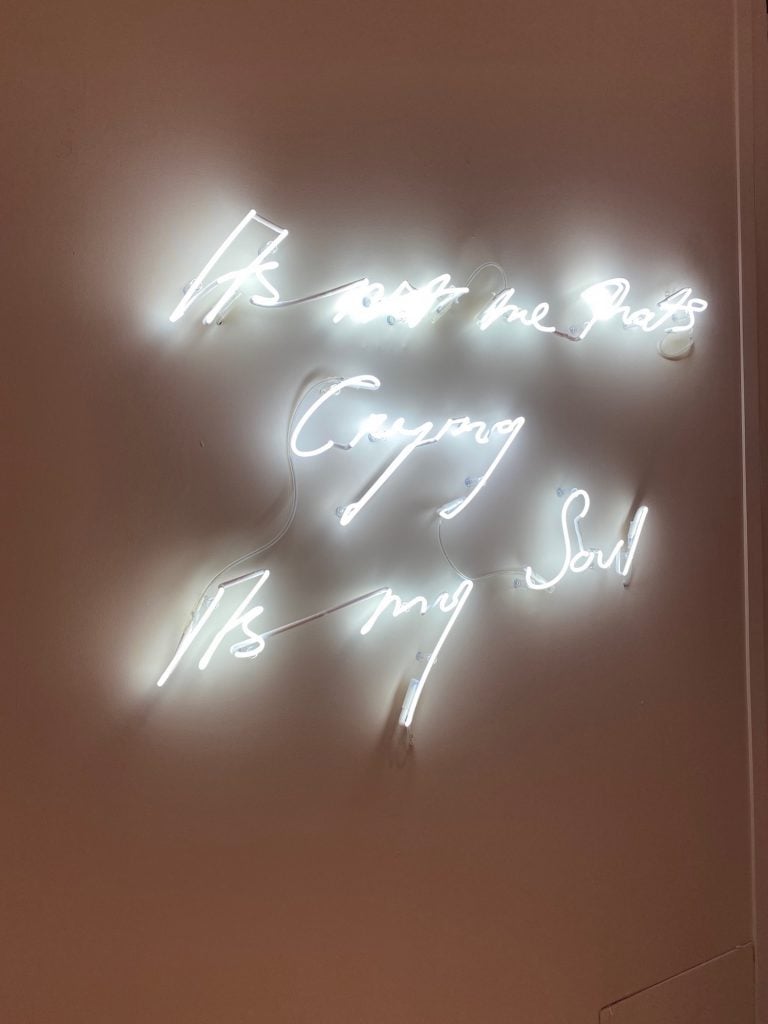
Tracey Emin’s work at White Cube’s booth at TEFAF, Maastricht, 2022. Photo by Eileen Kinsella.
Amid the palpable enthusiasm for the fair’s return, reports of robust sales were flowing. During the opening hours of the fair, Von Seegelen had already sold two mixed media works by Dutch contemporary artist Wim T. Schippers to the Dutch Museum Voorlinden.
White Cube also had a great turnout for its first outing at the fair, reporting multiple sales including Hove (2014) by Antony Gormley for £500,000 ($613,000).
Dusseldorf gallery Beck & Eggling sold two works by Spanish artist Manolo Valdés—Fiore III and Azul Blanco—for $650,000 each. They also sold a work by Ukrainian artist Aljoscha, titled Urpflanze III. Aljoscha attended the fair on opening day.
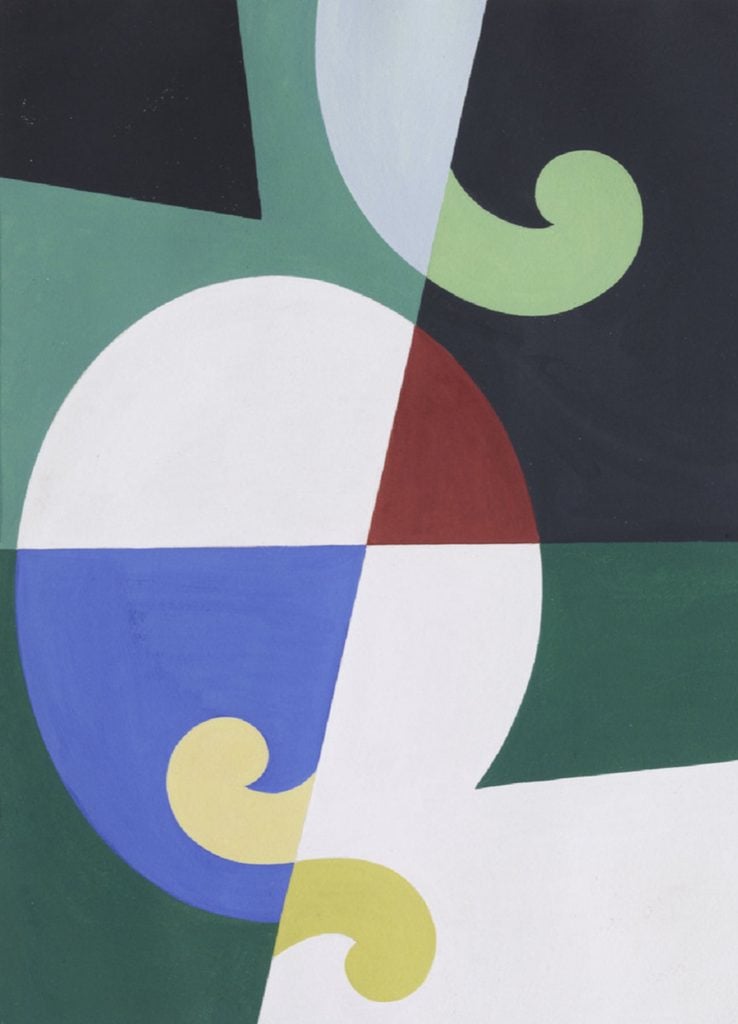
Sophie Taeuber Arp, Quatre plans irréguliers à volutes (1939). Image courtesy Galerie Le Minotaure, Paris.
A Lighthouse called Kanata, a contemporary art gallery from Tokyo, described its sales on opening day as “exceptional”, and said half were to new clients. And Galerie Le Minotaure, from Paris, sold Quatre plans irréguliers à volutes by Sophie Taeuber-Arp, which had an asking price of €300,000. London’s The Mayor Gallery sold 2 Trames de petits tirets 0º 90º by François Morellet.
Growing interest in female Old Masters, and overall better inclusion and contextualization of artists and their subject matter, was reflected in the greater than usual presentation of work by female Renaissance painters.
A TEFAF representative told Artnet News that dealers have seen a number of museums adding female Old Master artists to their collection and it’s also an area of relative opportunity for collectors because prices are reasonable. Among the highlights at the fair are Caterina Angela Pierozzi’s recently rediscovered Annunziation Miniature (1677), at Colnaghi Gallery.
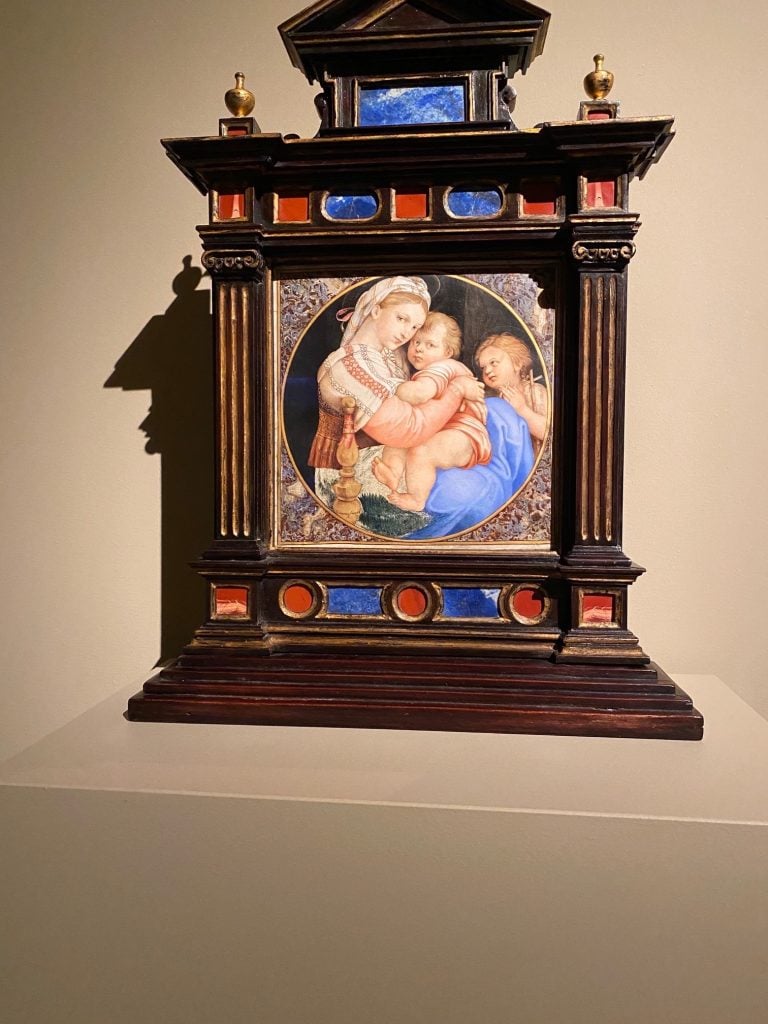
Giovanna Garza, The Virgin of the Chair After Raphael, (1649). Photo by Eileen Kinsella.
Michaelina Wattier’s Portrait Historié of a Man as Jacob, Husband of Rachel (c. 1655–60) was presented by Dutch dealers Bijl-Van-Urk B.V.; and there were works by Giovanna Garzoni and Lavinia Fontana with the Geneva-based dealer Rob Smeets.
Mary Beale’s 1660 An oil study of Charles Beale (depicting the artist’s husband) was on view at Weiss Gallery, which went all out with vibrant presentation of works hung on sumptuous-looking walls, painted a deep crimson red.
In fact, most of the reported painting sales so far were by Old Masters, including Madrid-based gallery Caylus which sold Virgin and Child by the 16th-century artist Luis de Morales for approximately €1.5 million ($1.59 million). Colnaghi reported the sale of Portrait of a Noblewoman (1620) by Rodrigo de Villandrando for €700,000, and Galleria Carlo Virgilio & C. sold the key work on its booth, Portrait of an unidentified sitter by Charles Mellin.
Trinity Fine Art sold one of its highlights, a depiction of Antonio Canova in his studio surrounded by his sculptures, painted by the 19th-century artist Pompeo Calvi, for €180,000. And Kunstgalerij Albricht, the Oosterbeek-based dealer, sold Two Boxers (1913–15) by Isaac Israels along with six further works, all to private collectors from the U.K., U.S., Germany, and the Netherlands.
There was “great response from the public and private collectors,” said antiques dealer Alessandra Di Castro of Rome, a longtime board member of TEFAF. “The exhibition marks the comeback to the world stage of the arts.”
Di Castro’s sales included a pair of silver candlesticks, by Giovanni Valadier, the son of Roman silversmith Andrea Valadier and the younger brother of Luigi. Both candlesticks bear the emblem of the d’Aprile family and are dated to 1797–99.
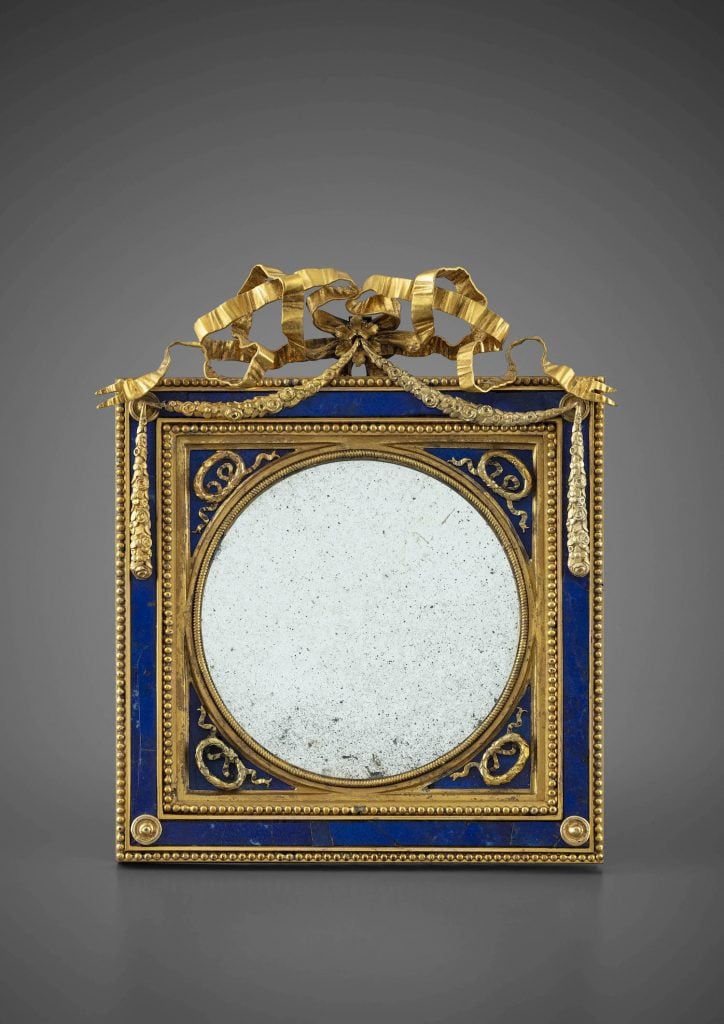
A lapis lazuli and gilt bronze mirror frame, signed by Luigi Valadier, circa 1770–75. Image courtesy of Alessandra di Castro, Rome.
The gallery also sold a lapis lazuli and gilt bronze mirror frame, signed by Luigi Valadier and dated 1770–75, as well as a pair of striking, large-scale carved, gilded and painted wood candelabras. The two candelabras, dated 1740–50 from Genova, were also sold during the exhibition to a private collector.